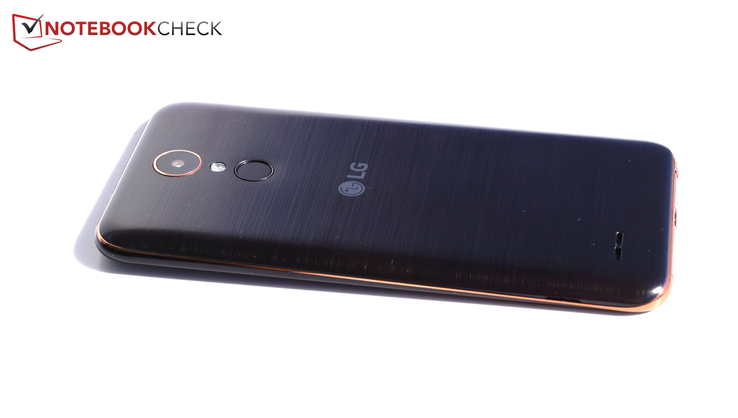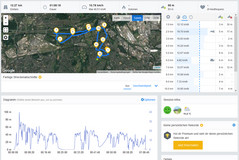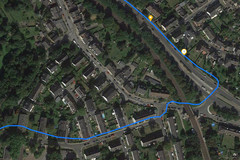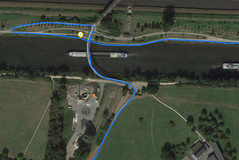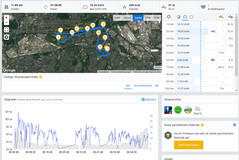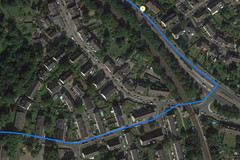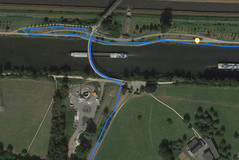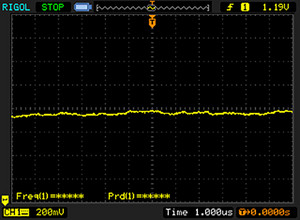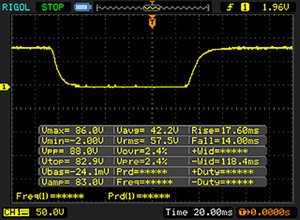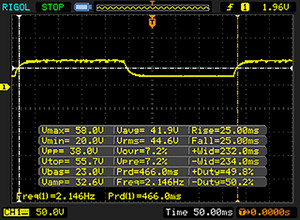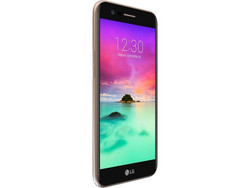Breve Análise do Smartphone LG K10 (2017)
Os Top 10
» Os Top 10 Portáteis Multimídia
» Os Top 10 Portáteis de Jogos
» Os Top 10 Portáteis Leves para Jogos
» Os Top 10 Portáteis Acessíveis de Escritório/Empresariais
» Os Top 10 Portáteis Premium de Escritório/Empresariais
» Os Top 10 dos Portáteis Workstation
» Os Top 10 Subportáteis
» Os Top 10 Ultrabooks
» Os Top 10 Conversíveis
» Os Top 10 Tablets
» Os Top 10 Smartphones
» A melhores Telas de Portáteis Analisadas Pela Notebookcheck
» Top 10 dos portáteis abaixo dos 500 Euros da Notebookcheck
» Top 10 dos Portáteis abaixo dos 300 Euros
Size Comparison
| Networking | |
| iperf3 transmit AX12 | |
| HTC One A9s | |
| LG K10 2017 | |
| Asus Zenfone 3 Max ZC520TL | |
| iperf3 receive AX12 | |
| HTC One A9s | |
| Asus Zenfone 3 Max ZC520TL | |
| LG K10 2017 | |
| |||||||||||||||||||||||||
iluminação: 85 %
iluminação com acumulador: 384 cd/m²
Contraste: 1067:1 (Preto: 0.36 cd/m²)
ΔE ColorChecker Calman: 6 | ∀{0.5-29.43 Ø4.78}
ΔE Greyscale Calman: 5.9 | ∀{0.09-98 Ø5}
Gamma: 2
CCT: 8042 K
| LG K10 2017 IPS, 1280x720, 5.3" | Samsung Galaxy J3 2016 Super AMOLED, 1280x720, 5" | Lenovo Moto G4 Play IPS, 1280x720, 5" | HTC One A9s IPS, 1280x720, 5" | Asus Zenfone 3 Max ZC520TL IPS, 1280x720, 5.2" | LG K10 IPS, 1280x720, 5.3" | |
|---|---|---|---|---|---|---|
| Screen | 6% | 4% | 24% | 13% | -3% | |
| Brightness middle (cd/m²) | 384 | 295 -23% | 412 7% | 348 -9% | 507 32% | 370 -4% |
| Brightness (cd/m²) | 350 | 299 -15% | 414 18% | 320 -9% | 474 35% | 355 1% |
| Brightness Distribution (%) | 85 | 96 13% | 94 11% | 85 0% | 85 0% | 92 8% |
| Black Level * (cd/m²) | 0.36 | 0.42 -17% | 0.23 36% | 0.53 -47% | 0.28 22% | |
| Contrast (:1) | 1067 | 981 -8% | 1513 42% | 957 -10% | 1321 24% | |
| Colorchecker dE 2000 * | 6 | 5.8 3% | 5.6 7% | 3.5 42% | 4.7 22% | 6.7 -12% |
| Colorchecker dE 2000 max. * | 14 | 8.6 39% | 9.7 31% | 6.4 54% | 7.2 49% | 17.8 -27% |
| Greyscale dE 2000 * | 5.9 | 4.8 19% | 6.9 -17% | 4 32% | 4.8 19% | 7.9 -34% |
| Gamma | 2 110% | 1.84 120% | 2.4 92% | 2.3 96% | 2.25 98% | 2.21 100% |
| CCT | 8042 81% | 6252 104% | 8422 77% | 6527 100% | 6441 101% | 9072 72% |
* ... menor é melhor
Cintilação da tela / PWM (modulação por largura de pulso)
| Tela tremeluzindo / PWM não detectado | |||
[pwm_comparison] Em comparação: 53 % de todos os dispositivos testados não usam PWM para escurecer a tela. Se PWM foi detectado, uma média de 8111 (mínimo: 5 - máximo: 343500) Hz foi medida. | |||
Exibir tempos de resposta
| ↔ Tempo de resposta preto para branco | ||
|---|---|---|
| 31.6 ms ... ascensão ↗ e queda ↘ combinadas | ↗ 17.6 ms ascensão | |
| ↘ 14 ms queda | ||
| A tela mostra taxas de resposta lentas em nossos testes e será insatisfatória para os jogadores. Em comparação, todos os dispositivos testados variam de 0.1 (mínimo) a 240 (máximo) ms. » 85 % de todos os dispositivos são melhores. Isso significa que o tempo de resposta medido é pior que a média de todos os dispositivos testados (20.2 ms). | ||
| ↔ Tempo de resposta 50% cinza a 80% cinza | ||
| 50 ms ... ascensão ↗ e queda ↘ combinadas | ↗ 25 ms ascensão | |
| ↘ 25 ms queda | ||
| A tela mostra taxas de resposta lentas em nossos testes e será insatisfatória para os jogadores. Em comparação, todos os dispositivos testados variam de 0.165 (mínimo) a 636 (máximo) ms. » 85 % de todos os dispositivos são melhores. Isso significa que o tempo de resposta medido é pior que a média de todos os dispositivos testados (31.6 ms). | ||
| AnTuTu v6 - Total Score (classificar por valor) | |
| LG K10 2017 | |
| Samsung Galaxy J3 2016 | |
| Lenovo Moto G4 Play | |
| HTC One A9s | |
| Asus Zenfone 3 Max ZC520TL | |
| LG K10 | |
| GFXBench (DX / GLBenchmark) 2.7 | |
| T-Rex Onscreen (classificar por valor) | |
| LG K10 2017 | |
| Samsung Galaxy J3 2016 | |
| Lenovo Moto G4 Play | |
| HTC One A9s | |
| Asus Zenfone 3 Max ZC520TL | |
| LG K10 | |
| 1920x1080 T-Rex Offscreen (classificar por valor) | |
| LG K10 2017 | |
| Samsung Galaxy J3 2016 | |
| Lenovo Moto G4 Play | |
| HTC One A9s | |
| Asus Zenfone 3 Max ZC520TL | |
| LG K10 | |
| GFXBench 3.0 | |
| on screen Manhattan Onscreen OGL (classificar por valor) | |
| LG K10 2017 | |
| Lenovo Moto G4 Play | |
| HTC One A9s | |
| Asus Zenfone 3 Max ZC520TL | |
| LG K10 | |
| 1920x1080 1080p Manhattan Offscreen (classificar por valor) | |
| LG K10 2017 | |
| Lenovo Moto G4 Play | |
| HTC One A9s | |
| Asus Zenfone 3 Max ZC520TL | |
| LG K10 | |
| GFXBench 3.1 | |
| on screen Manhattan ES 3.1 Onscreen (classificar por valor) | |
| LG K10 2017 | |
| HTC One A9s | |
| Asus Zenfone 3 Max ZC520TL | |
| LG K10 | |
| 1920x1080 Manhattan ES 3.1 Offscreen (classificar por valor) | |
| LG K10 2017 | |
| HTC One A9s | |
| Asus Zenfone 3 Max ZC520TL | |
| LG K10 | |
| PCMark for Android - Work 2.0 performance score (classificar por valor) | |
| LG K10 2017 | |
| Geekbench 4.4 | |
| 64 Bit Single-Core Score (classificar por valor) | |
| LG K10 2017 | |
| 64 Bit Multi-Core Score (classificar por valor) | |
| LG K10 2017 | |
| Compute RenderScript Score (classificar por valor) | |
| LG K10 2017 | |
| Octane V2 - Total Score (classificar por valor) | |
| LG K10 2017 | |
| Samsung Galaxy J3 2016 | |
| Lenovo Moto G4 Play | |
| HTC One A9s | |
| Asus Zenfone 3 Max ZC520TL | |
| LG K10 | |
| Mozilla Kraken 1.1 - Total (classificar por valor) | |
| LG K10 2017 | |
| Samsung Galaxy J3 2016 | |
| Lenovo Moto G4 Play | |
| HTC One A9s | |
| Asus Zenfone 3 Max ZC520TL | |
| LG K10 | |
| JetStream 1.1 - Total Score (classificar por valor) | |
| LG K10 2017 | |
| Samsung Galaxy J3 2016 | |
| Lenovo Moto G4 Play | |
| HTC One A9s | |
| Asus Zenfone 3 Max ZC520TL | |
| LG K10 | |
* ... menor é melhor
| Asphalt 8: Airborne | |||
| Configurações | Valor | ||
| high | 29 fps | ||
| very low | 30 fps | ||
| Dead Trigger 2 | |||
| Configurações | Valor | ||
| high | 51 fps | ||
(±) A temperatura máxima no lado superior é 40.1 °C / 104 F, em comparação com a média de 35.2 °C / 95 F , variando de 21.9 a 247 °C para a classe Smartphone.
(±) A parte inferior aquece até um máximo de 41.3 °C / 106 F, em comparação com a média de 34 °C / 93 F
(+) Em uso inativo, a temperatura média para o lado superior é 30.5 °C / 87 F, em comparação com a média do dispositivo de 32.9 °C / ### class_avg_f### F.
LG K10 2017 análise de áudio
(+) | os alto-falantes podem tocar relativamente alto (###valor### dB)
Graves 100 - 315Hz
(-) | quase nenhum baixo - em média 33% menor que a mediana
(+) | o baixo é linear (2.1% delta para a frequência anterior)
Médios 400 - 2.000 Hz
(±) | médios reduzidos - em média 12.7% menor que a mediana
(±) | a linearidade dos médios é média (14.8% delta para frequência anterior)
Altos 2 - 16 kHz
(±) | máximos mais altos - em média 10.4% maior que a mediana
(+) | os máximos são lineares (5.2% delta da frequência anterior)
Geral 100 - 16.000 Hz
(-) | o som geral não é linear (39% diferença em relação à mediana)
Comparado com a mesma classe
» 86% de todos os dispositivos testados nesta classe foram melhores, 0% semelhantes, 14% piores
» O melhor teve um delta de 11%, a média foi 35%, o pior foi 134%
Comparado com todos os dispositivos testados
» 95% de todos os dispositivos testados foram melhores, 1% semelhantes, 5% piores
» O melhor teve um delta de 4%, a média foi 24%, o pior foi 134%
HTC One A9s análise de áudio
(+) | os alto-falantes podem tocar relativamente alto (###valor### dB)
Graves 100 - 315Hz
(-) | quase nenhum baixo - em média 18.2% menor que a mediana
(±) | a linearidade dos graves é média (13.5% delta para a frequência anterior)
Médios 400 - 2.000 Hz
(±) | médios mais altos - em média 5.4% maior que a mediana
(+) | médios são lineares (5.4% delta para frequência anterior)
Altos 2 - 16 kHz
(±) | máximos mais altos - em média 11.7% maior que a mediana
(±) | a linearidade dos máximos é média (8.3% delta para frequência anterior)
Geral 100 - 16.000 Hz
(±) | a linearidade do som geral é média (28.6% diferença em relação à mediana)
Comparado com a mesma classe
» 74% de todos os dispositivos testados nesta classe foram melhores, 4% semelhantes, 21% piores
» O melhor teve um delta de 11%, a média foi 35%, o pior foi 134%
Comparado com todos os dispositivos testados
» 86% de todos os dispositivos testados foram melhores, 3% semelhantes, 12% piores
» O melhor teve um delta de 4%, a média foi 24%, o pior foi 134%
| desligado | |
| Ocioso | |
| Carga |
|
Key:
min: | |
| LG K10 2017 2800 mAh | Samsung Galaxy J3 2016 2600 mAh | Lenovo Moto G4 Play 2800 mAh | HTC One A9s 2300 mAh | Asus Zenfone 3 Max ZC520TL 4100 mAh | |
|---|---|---|---|---|---|
| Power Consumption | 16% | 3% | -47% | -39% | |
| Idle Minimum * (Watt) | 0.76 | 0.96 -26% | 0.68 11% | 1.29 -70% | 0.74 3% |
| Idle Average * (Watt) | 1.59 | 1.14 28% | 1.58 1% | 2.28 -43% | 2.04 -28% |
| Idle Maximum * (Watt) | 1.61 | 1.23 24% | 1.61 -0% | 2.52 -57% | 2.22 -38% |
| Load Average * (Watt) | 3.24 | 2.45 24% | 3.36 -4% | 4.06 -25% | 5.57 -72% |
| Load Maximum * (Watt) | 4.15 | 2.92 30% | 3.91 6% | 5.91 -42% | 6.59 -59% |
* ... menor é melhor
| LG K10 2017 2800 mAh | Samsung Galaxy J3 2016 2600 mAh | Lenovo Moto G4 Play 2800 mAh | HTC One A9s 2300 mAh | Asus Zenfone 3 Max ZC520TL 4100 mAh | LG K10 2300 mAh | |
|---|---|---|---|---|---|---|
| Duração da bateria | 4% | 17% | -5% | 23% | -16% | |
| Reader / Idle (h) | 24.6 | 20.2 -18% | 33.3 35% | 25.7 4% | 24.4 -1% | 18.7 -24% |
| H.264 (h) | 10.2 | 9.8 -4% | 11.4 12% | 9.8 -4% | 14.1 38% | 10.1 -1% |
| WiFi v1.3 (h) | 8.9 | 8.4 -6% | 10.5 18% | 8.6 -3% | 13.6 53% | 7.6 -15% |
| Load (h) | 5 | 7.2 44% | 5.1 2% | 4.1 -18% | 5 0% | 3.9 -22% |
Pro
Contra
O LG K10 (2017) certamente conseguiu uma coisa: é um evidente progresso em comparação com o seu predecessor. A carcaça mais uma vez se tornou mais fina de de maior qualidade, a bateria dura bastante mais e isso com um evidente poder maior sob o capô. Este aumento do poder é tão notável, que muitos aparelhos concorrentes também são superados pelo LG K10 (2017). Apenas o HTC One A9s possui ainda mais reservas de poder, no entanto, esse aparelho realmente vem de uma faixa de preços diferente.
É claro que há algo do que reclamar: o alto falante soa chiado, o qual torna o uso do modo mãos livres difícil de usar. Da mesma forma é o microfone de qualidade medíocre e a tela poderia ser mais brilhante. Mas, na verdade, essas foram nossas queixas: O sistema operacional é atual, o consumo de energia é bom, a câmera tira fotos muito boas, e o LG K10 (2017) lida bem.
O alto desempenho e a bateria removível são os destaques do LG K10 (2017). A qualidade da carcaça de plástico também deixa uma boa impressão. Em termos de som, a LG poderia se sair melhor, mas no geral, o LG K10 (2017) é um bom smartphone econômico.
No geral, uma clara recomendação para o LG K10 (2017). Somente alguém que precise de mais capacidade de bateria optará pelo Asus Zenfone 3 Max, mas deve considerar que, em contraste com o LG K10 (2017), a bateria não pode ser removida ali. O mesmo vai para o HTC One A9s, onde você, mais uma vez, recebe mais desempenho. Mas, de qualquer forma, o LG K10 (2017) é uma boa opção por menos de 200 Euros (~ $ 212).
The LG K10 (2017) certainly managed one thing: it is a clear progress compared to its predecessor. The casing became again slimmer and more high-quality, the battery lasts noticeably longer and that even with clearly more power under the hood. This power increase is so noticeable, that many competing devices are also outpaced by the LG K10 (2017). Only the HTC One A9s possesses even more power reserves, however, that device really comes from a different price range.
Of course there is something to complain: the speaker sounds squeaky, which makes the hands-free mode also hard to use. Likewise is the microphone of mediocre quality and the screen could be brighter. But actually, that was the extent of our complaints: The operating system is current, the power consumption okay, the camera takes quite good pictures, and the LG K10 (2017) handles well.
The high performance and the removable battery are the highlights of the LG K10 (2017). The quality of the plastic case also leaves a good impression. In terms of sound, the LG could do better, but overall, the LG K10 (2017) is a good budget smartphone.
Overall, a clear recommendation for the LG K10 (2017). Only anyone who absolutely needs more battery capacity will reach for the the Asus Zenfone 3 Max, but should consider that, in contrast to the LG K10 (2017), the battery cannot be removed there. The same goes for the HTC One A9s, where you again get more performance instead. But at any rate, the LG K10 (2017) is a very good deal for currently under 200 Euros (~$212).
LG K10 2017
- 04/12/2017 v6 (old)
Florian Wimmer




